Joe Parker gets his hands on the newest all-rounder from Hoyt
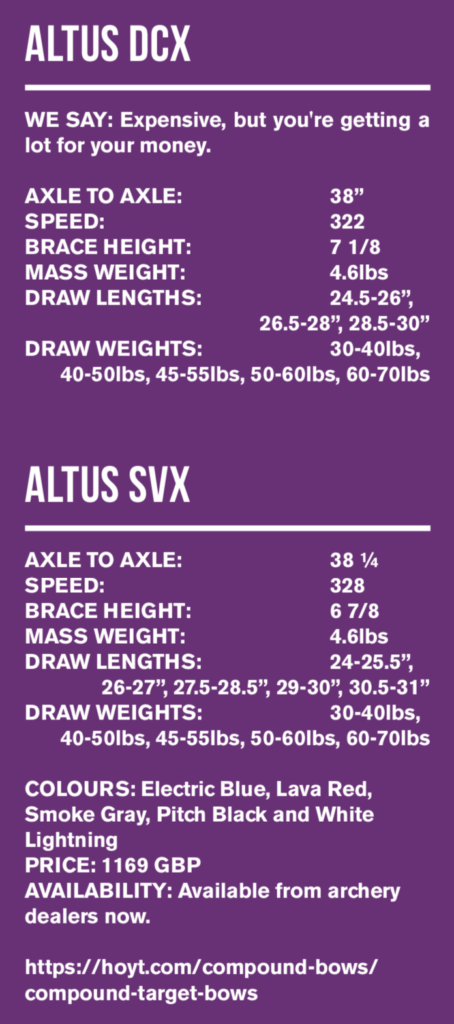
2020 has officially been consigned to the history books. We’re all a little battered and bruised by the upheaval of last year, I doubt there are many in this world that have not been affected in some way by the pandemic and archery is no exception.
Tournaments and clubs have been gradually closing their doors since last March and this has had an enormous negative effect on our sport. But as we begin 2021 we look forward with renewed hope and excitement to something new and who better to kick off the year than Hoyt with their latest bow release: the Altus.

Marketed as an all round target and 3D tournament bow, the Altus joins Hoyt’s premium bow line-up and shares many of the same features as their flagship model the Invicta.
The 13” hybrid limbs are a popular feature of the Invicta, now in their second generation on the Altus they offer the best of parallel and steep angle limb technology.
Designed to produce the power and efficiency of parallel limbs with the accuracy of vertical limb geometries, this ‘best of both worlds’ approach produces an aggressive stance at full draw while generating a low vibration shot with lots of valuable feedback upon release.
The driving force behind any compound bow is its cam system and the Altus doesn’t disappoint, featuring Hoyt’s ever popular DCX and SVX cam and-a-half systems which are a tried and tested favourite amongst shooters.
The round shaped DCX cam is forgiving and adjustable; it comes in three sizes boasting a draw length range between 24.5” and 30”. The rotating module adjustment is a neat design, making it easy to move up and down draw lengths without the need of a bow press.
The DCX cam is available in 65 or 75% let-off options and boasts a smooth draw, a firm wall and speeds of up to 322 fps. For archers wanting an easy and relaxed shot, this is the cam for you.
The oval shaped SVX cam is a favourite amongst Hoyt pro staff; with a fixed 65% let-off and an ultra firm wall, this super efficient cam produces speeds of up to 328 fps.
Featuring an interchangeable module system, available in five base cam sizes, the SVX cam offers a draw length range of 24” to 31”. You will need to switch out modules when changing draw lengths so it’s a little more labour-intensive than the DCX cam, but it will suit shooters looking for a bow that feels ‘ready to go’ at full draw and those who prefer to pull hard through the shot.
Hoyt have become synonymous for their distinctive TEC riser designs, this time however they have decided to do things a little differently; the Altus is the first premium Hoyt compound not to feature their ‘Total Engineering Concept’ design.
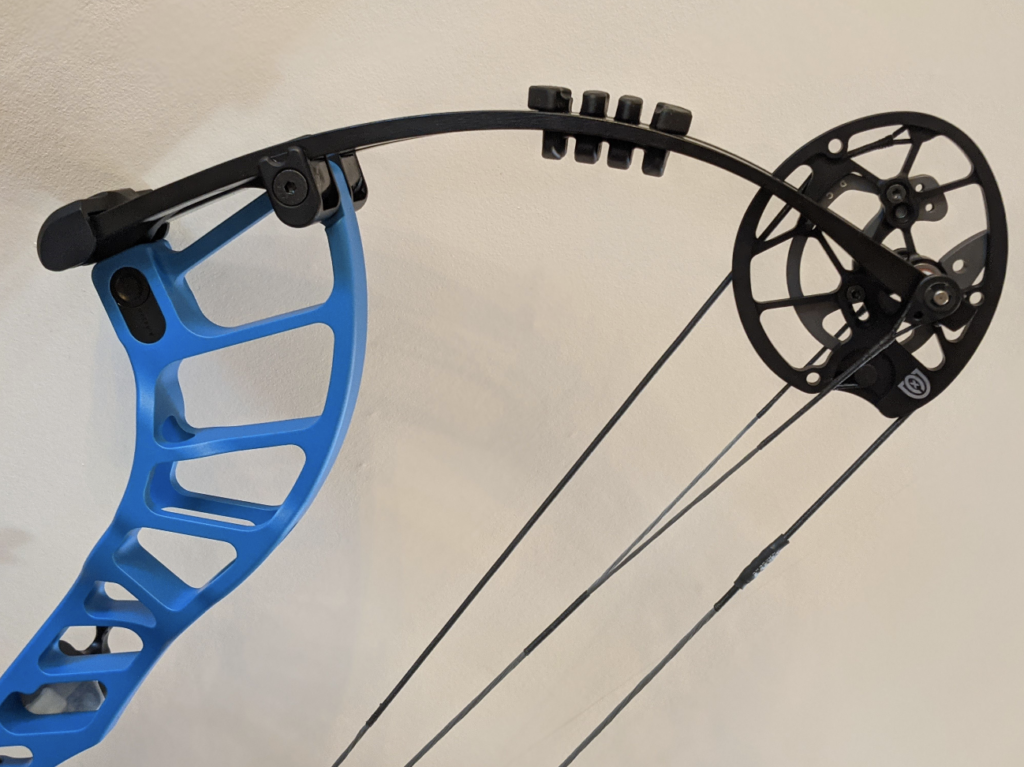
The TEC model consists of a thin truss on the back of the riser; this bridge sits behind the grip and increases the strength of the riser at its weakest point, preventing riser flex and acting as a shock absorber.
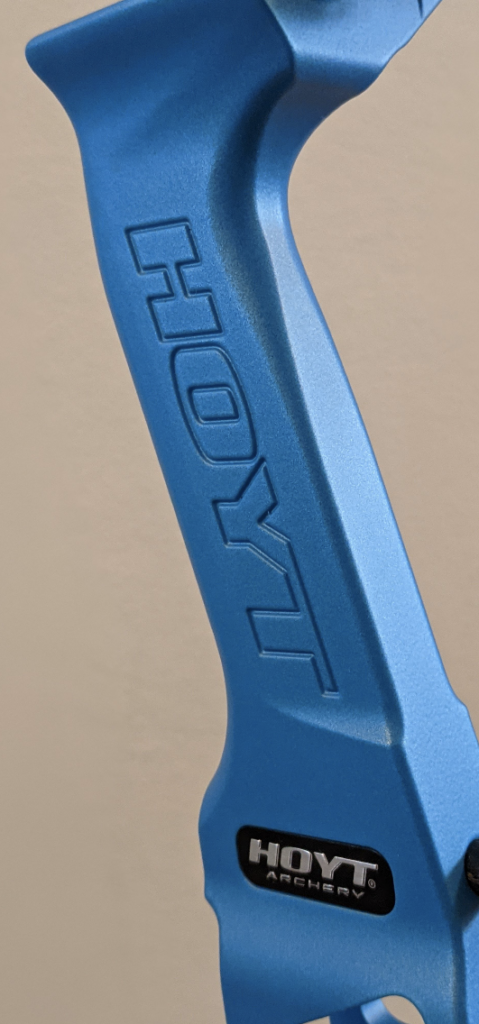
Many of Hoyt’s previous bows, including the Invicta, also feature a shoot-through riser design, which further increases the stiffness and stability of the bow.
The Altus reconsiders both these concepts, instead its riser is designed as a single beam; this cutting edge design features lower and upper tunnels machined into the riser that improve its strength without the need for a shoot-through TEC riser.
The clean simplicity of an open shelf design has always been popular amongst shooters and the Altus will certainly appeal to those who favour this riser style.
Unlike the Invicta, the Altus comes in only one length, measuring at 38” axle to axle; it fits neatly into the ‘sweet spot’ of compound bow design. Not so long as to feel heavy and cumbersome and not so short that the string angle becomes uncomfortable for longer draw length shooters.
The Altus also has some interesting and premium features. Hoyt’s integrated mounting system challenges the old idea of attaching an arrow rest to your bow; the dovetail design is machined directly into the riser, allowing an integrate compatible rest to be clamped directly into it, forging a connection that physically cannot rotate and is twice as secure as a traditional Berger button mounted rest.
Quality Archery Designs have collaborated with Hoyt to produce a range of arrow rests compatible with this mounting system, so look out for the Hoyt edition QAD integrated style arrow rests when setting up the Altus.
But for those of you that prefer to use their old trusted arrow rest don’t panic, you can still mount any brand arrow rest to the side of the bow in the traditional way.
The rear stabiliser mount also comes with a unique feature; Hoyt’s secondary lock-down hole is designed to be used with their Hard-Lock rear stabiliser bracket. Hoyt promises bomb-proof, rock solid mounting when securing with this extra fitment.
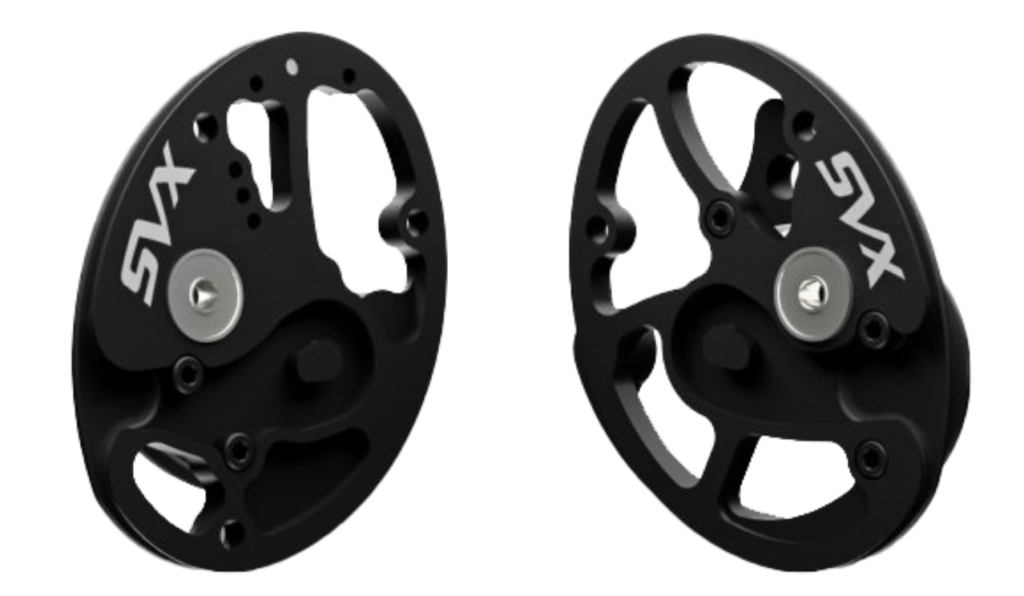
Hoyt pride themselves on their narrow and comfortable grips which are renowned to reduce hand torque and increase consistency and accuracy. The machined grip on the Altus is testament to this.
It’s perfectly tapered design, which is thin at the top and flattens out towards the bottom, sits comfortably in the hand. The grip is angled at zero degrees and is square in shape with no sharp edges or corners to dig into your hand. Though the Altus does not offer the modular grip system featured on the Invicta, its feels very natural and comfortable in the hand.
The Altus in action
I managed to get my hands on an Altus; kitted out in striking electric blue and fitted with DCX cams. I was immediately impressed by Hoyt’s attention to detail; the finish on the riser and limbs are testament to the level of quality Hoyt have put into to this premium range bow.
The initial set-up was quick and easy; after setting my poundage and checking that the cams were in sync I set my draw length using the rotating modules and was happy to see that the cams stayed perfectly timed. After tying my nock point (in-line with the Berger hole) and positioning the arrow level and central in the bow I was ready to start tuning.
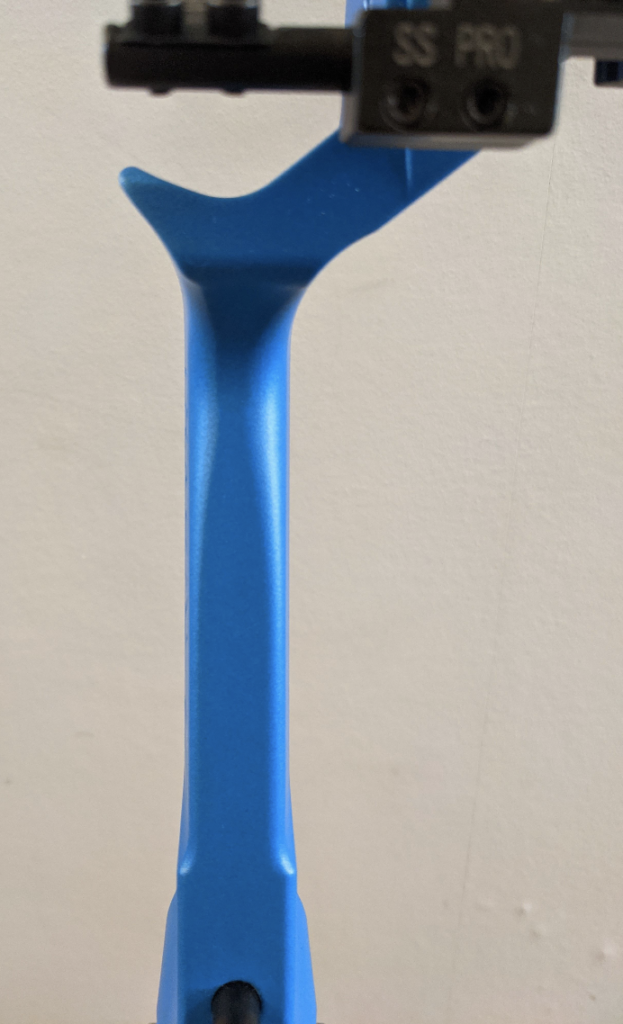
My first shot through paper gave me a slight nock left tear, so I made a quick adjustment to the yoke on the top cam and my second shot was a bullet hole. The Altus bullet holed all the way back to 20 yards, even the bare shaft I tested hit centrally in the fletched arrow group; all signs of a well tuned bow.
The Altus felt light in my hand; I’ve gotten used to compounds getting heavier so this feels quite trim at only 4.6lbs. It also sat comfortably; the Altus grip has a nice finish to it with no sharp edges or spurs. Even though you can’t alter the angle and depth of the grip like you can on the Invicta, my wrist position felt natural and it suited my shooting style.
The draw cycle of the DCX cam is super smooth; I even had to double check my bow scales as it didn’t feel like I was drawing 60lbs. The stops weren’t as hard as I would like but they weren’t so spongy as to cause issues. From experience I think I’d better suit the SVX cams but I suspect the DCX will be the more popular cam option amongst shooters.
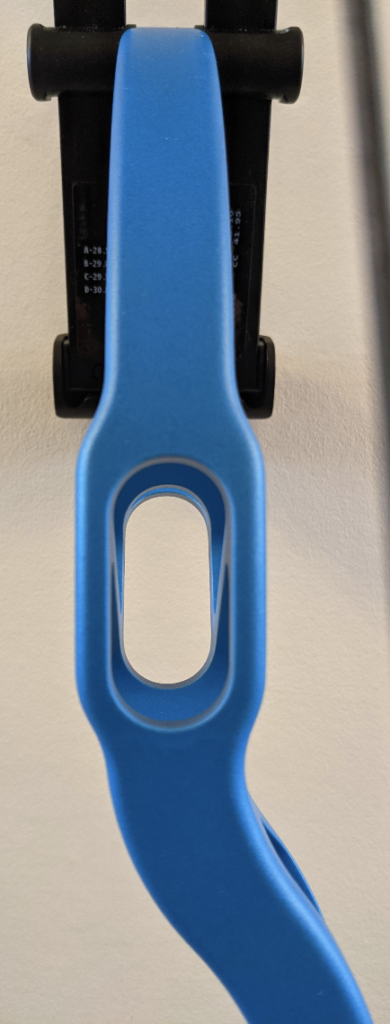
At 18m the Altus held remarkably well on the target; I balanced it with a single 12” rear stabiliser in the lower mounting hole and a 30” long rod out the front. It remained solid throughout the shot as I pulled through my release; this gave me the confidence to just focus on my aim without worrying about steadying the bow.
There was little vibration upon release, thanks to Hoyt’s shock absorbing system. The Stealth Shot or string stop is designed to increase accuracy by producing a cleaner, crisper arrow release from the string, the limb shocks also absorb some of the shot vibration which makes the Altus feel extremely comfortable to shoot. After only a few ends my shots felt natural and easy, my groups were tight and any bad shots I made weren’t nearly as bad as I’d expected.
The Altus is a welcome addition to the Hoyt target line-up, it delivers everything you’d expect from a brand like Hoyt and I’m sure it will become a solid contender on the tournament field.
My only criticism is the price, in the UK it’s barely £200 cheaper than the Invicta; this alone isn’t a deal breaker as the Altus is in every way a premium offering and has a markedly different riser design, but it offers fewer bells and whistles.
In comparison the Altus seems more like a mid-range offering priced as a top of the line model, but then if it wasn’t for the Invicta the Altus would easily take its place as Hoyt’s flagship compound bow. That said The Altus will more than hold its own against the competition – no matter the price point.


Is there any short bow in altus bow